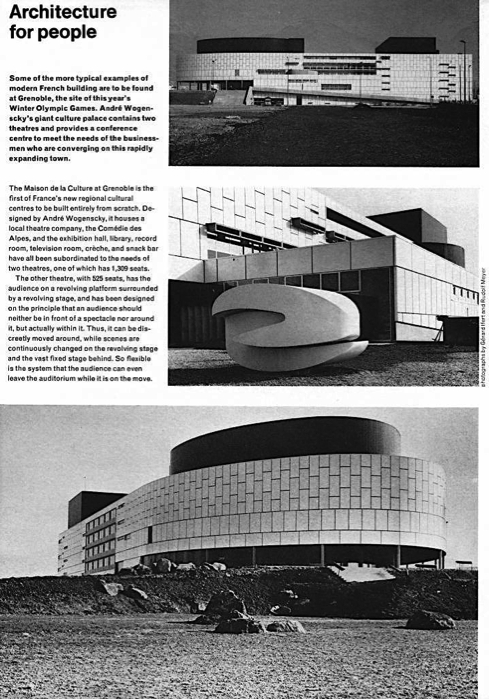
Design Journal October 1968
The (brief) porcelain enamel phase
When Professor Seligmann ran across the article, to the far left, in the Cornell architecture library, in late 1968, he was so excited he had multiple copies made and gave them out to anyone who came by. It was the first announcement of the newly-completed cultural center in Grenoble, France, by Le Corbusier’s longtime, righthand man, André Wogenscky. It was not only the hovering, elliptical form of the auditorium; nor the long, crisp cutouts of the rectangular block; nor the way the auditorium seating appeared to float on its own disk—what impressed Seligmann the most was the unabashed use of white porcelain enamel panels. He became an immediate advocate and seemed immediately to understand and espouse its benefits.
Sadly, only one constructed project, the Willard Administration Building, ended up using porcelain enamel cladding. Had its related facility, the sprawling Willard Rehabilitation Center been built, they would have brought the gloomy state mental hospital into the 21st century. The form of the elliptical auditorium would have been repeated in the rehabilitation center auditorium. And the long horizontal cutouts, in fact, do appear in the administration building.
Arguably, the use of manufactured panels influenced the choice of materials for Center Ithaca, with its marble panels, the Olean Central Firestation, with its cast stone panels, and for the materials proposed in the Cardiff Opera House competition entry, of limestone and cast aluminum.
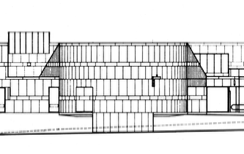
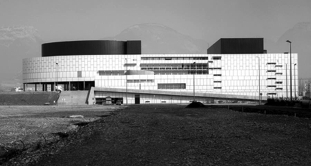
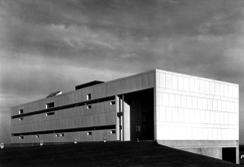
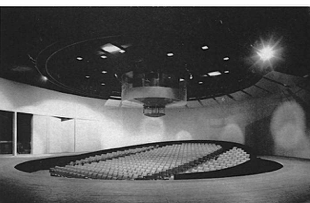
Although many of Seligmann’s buildings have been altered, or razed altogether, it is a bit ironic, that the Administration Building has best retained its original integrity because there has been no need (or ability) to alter the porcelain enamel.
viii
Willard Administration Building 1971
Willard Rehabilitation Center 1972 (unbuilt) detail of auditorium